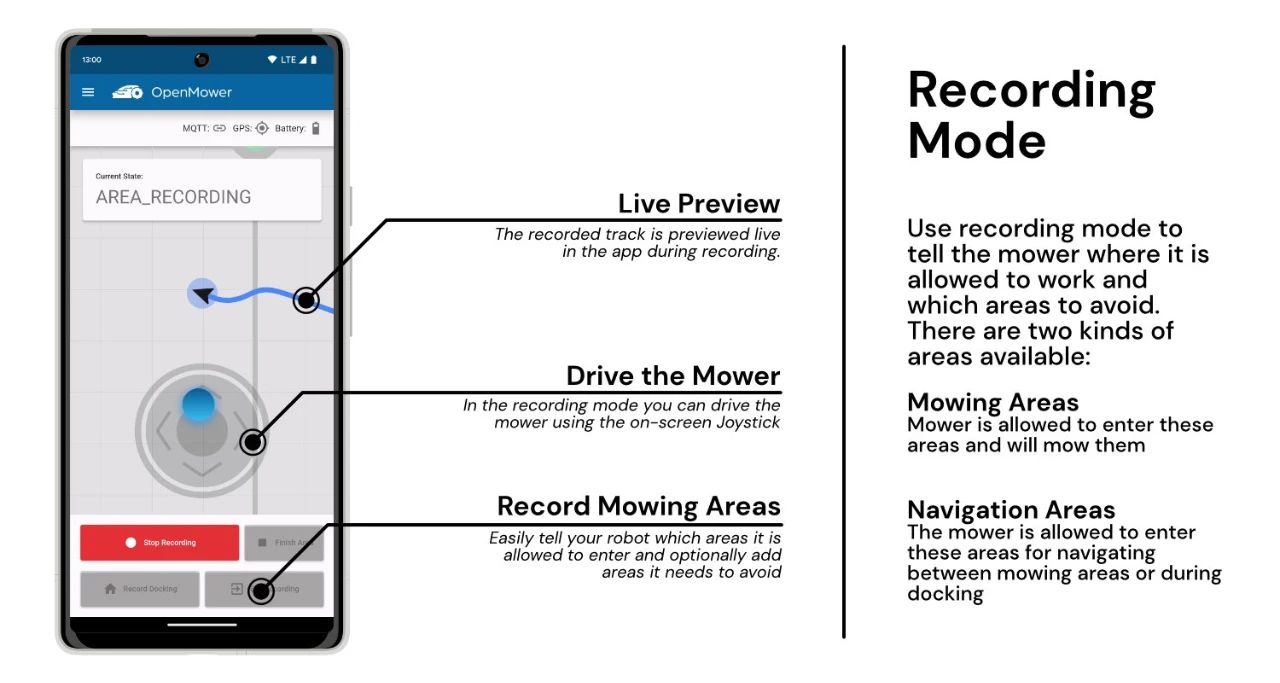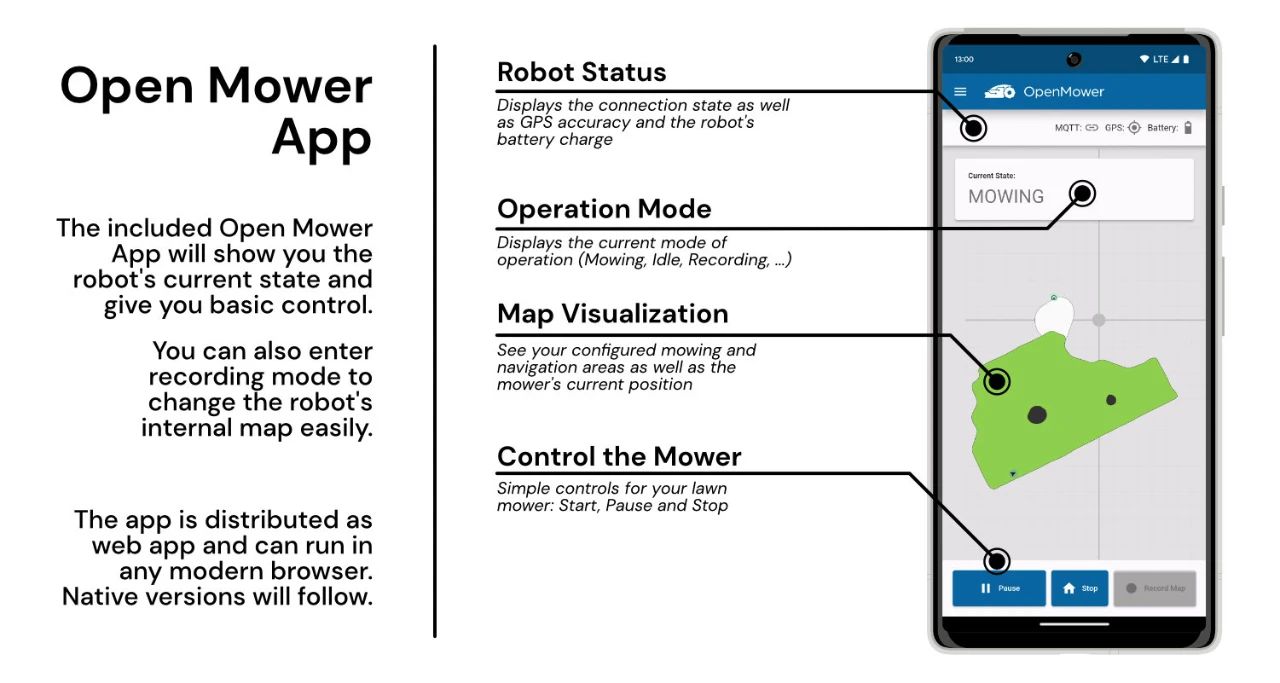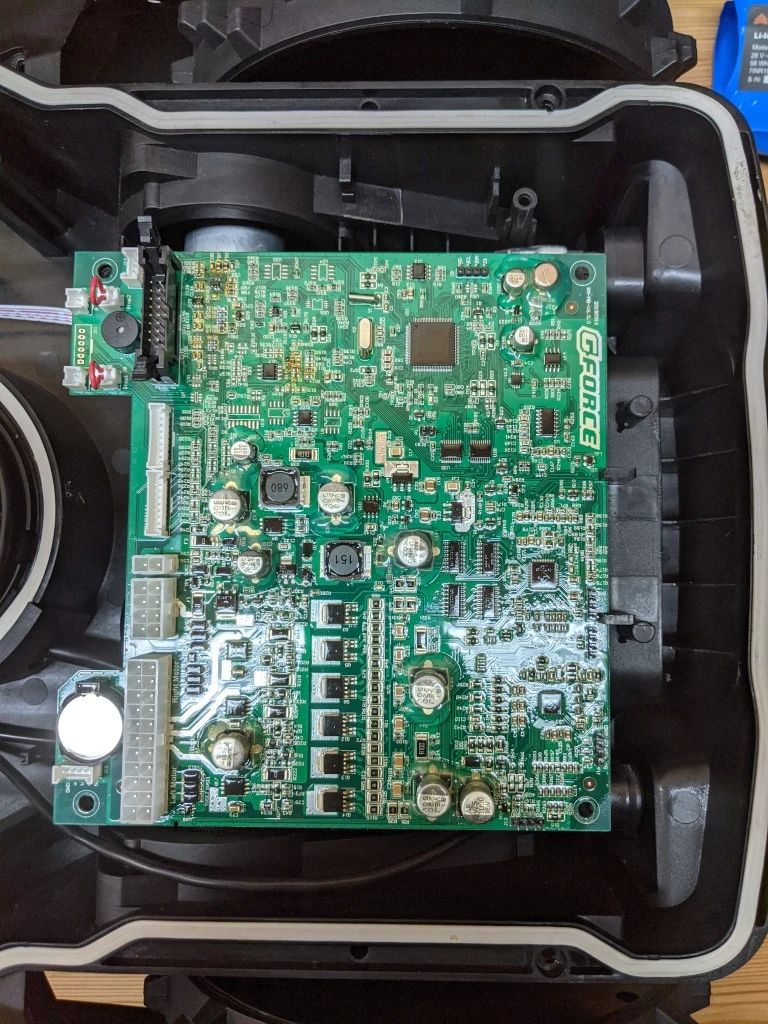
Smart robotic lawnmowers are considered to be a multi-billion dollar market, primarily based on the following considerations:
1. Huge Market Demand: In regions like Europe and North America, owning a private garden or lawn is very common, making lawn mowing an essential task in their daily lives. Traditional manual mowing or hiring workers for mowing is not only time-consuming and labor-intensive but also costly. Therefore, there is a significant market demand for smart robotic lawnmowers that can autonomously perform mowing tasks.
2. Technological Innovation Opportunities: With the continuous development of technologies such as sensors, navigation systems, and artificial intelligence, the performance of smart robotic lawnmowers has been continuously improving, and their functionalities have become increasingly rich. They can achieve autonomous navigation, obstacle avoidance, path planning, automatic recharging, etc., greatly improving the efficiency and convenience of lawn mowing. This technological innovation provides strong support for the rapid development of the smart robotic lawnmower market.
3. Environmental Protection and Energy Efficiency Trends: Compared to traditional manual or gas-powered lawnmowers, smart robotic lawnmowers have lower noise and emissions, resulting in less environmental impact. Driven by trends in environmental protection and energy efficiency, an increasing number of consumers are choosing smart robotic lawnmowers to replace traditional mowing methods.
4. Mature Industry Chain: China has a complete machinery production industry chain, with strong capabilities in research and development, design, manufacturing, and sales. This enables China to quickly respond to global market demands and produce high-quality, competitive smart robotic lawnmowers. Additionally, with the transfer and upgrade of global manufacturing industries, China's share in the global smart robotic lawnmower market is expected to further increase.
In summary, based on factors such as huge market demand, opportunities brought by technological innovation, trends in environmental protection and energy efficiency, and a mature industry chain, smart robotic lawnmowers are considered to have a multi-billion dollar potential market.
Project Objectives
Here is a quick overview of the project objectives:
✔️ Autonomous Lawn Mowing: The device should be capable of mowing the lawn automatically.
✔️ Good Safety Features: The device must be safe, for example, by emergency stopping when lifted or encountering obstacles.
✔️ No Need for Perimeter Wires: We want flexibility and support for multiple mowing areas without the need for perimeter wires.
✔️ Low Cost: It should be cheaper than mid-range commercial products.
✔️ Open: I want to share knowledge and enable others to build OpenMower.
✔️ Aesthetic: You should not feel embarrassed to use OpenMower to mow the lawn.
✔️ Obstacle Avoidance: The mower should detect obstacles during mowing and avoid them.
✔️ Rain Sensing: The device should be able to detect adverse weather conditions and pause mowing until conditions improve.
App Showcase


Hardware
So far, we have a stable version of the mainboard and two accompanying motor controllers. The xESC mini and xESC 2040. Currently, I'm using the xESC mini for the build, and it's working great. The issue with this controller is that it's difficult to find its components. That's why we're creating the xESC 2040 based on the RP2040 chip. This is a low-cost variant, which is currently in the experimental stage.
Hardware To-Do List
Project Approach
We dismantled the cheapest off-the-shelf robot lawnmower we could find (YardForce Classic 500) and were pleasantly surprised by the quality of the hardware:
Gear-induced brushless motors for the wheels
Brushless motors for the lawnmower itself
The overall structure appeared sturdy, waterproof, and well-thought-out
All components were connected using standard connectors, making hardware upgrades easy.
Lawnmower Mainboard

ROS Workspace
This folder serves as the ROS workspace used for building the OpenMower ROS software. The repository contains ROS packages for controlling the OpenMower.
It also references other repositories (libraries) needed to build the software. This allows us to track the exact versions of the packages used in each release to ensure compatibility. Currently, it includes the following repositories:
slic3r_coverage_planner: A 3D printer coverage planner based on the Slic3r software. This is used for planning the mowing paths.
teb_local_planner: The local planner that allows the robot to navigate around obstacles and follow the global path while adhering to kinematic constraints.
xesc_ros: The ROS interface for the xESC motor controller.

In Europe and America, many households have their own gardens or lawns due to abundant land resources, thus requiring regular lawn mowing. Traditional mowing methods often involve hiring workers, which not only incur high costs but also require a significant amount of time and effort for supervision and management. Therefore, intelligent automated lawn mowers have great market potential.
Automated lawn mowers integrate advanced sensors, navigation systems, and artificial intelligence technology, allowing them to autonomously mow lawns, navigate obstacles, and plan paths. Users only need to set the mowing area and height, and the automated mower can complete the mowing task automatically, greatly improving efficiency and saving labor costs.
Furthermore, automated lawn mowers have the advantages of being environmentally friendly and energy-efficient. Compared to traditional manual or gas-powered mowers, automated mowers produce lower noise and emissions, resulting in minimal environmental impact. Additionally, automated mowers can adjust mowing strategies based on the actual conditions of the lawn, avoiding energy waste.
However, to enter this market and achieve success, several factors need to be considered. Firstly, the technology of automated mowers must be mature and reliable to meet the practical needs of users. Secondly, pricing is also a crucial factor, as excessively high prices may hinder product adoption. Lastly, establishing a comprehensive sales and service network is essential to provide users with convenient support and services.
In conclusion, intelligent automated lawn mowers have tremendous potential in the European and American markets. However, achieving commercial success requires efforts in technology, pricing, and services.

Who can seize this multibillion-dollar opportunity?
Technology Research and Development: Continuously invest in R&D resources to enhance the intelligence, efficiency, and reliability of automated lawn mowers. Focus on understanding user needs and regulatory requirements in the European and American markets to ensure products comply with relevant standards.
Brand Building: Establish the brand image of Chinese smart lawn mowers in the international market to enhance consumer awareness and trust in Chinese products. This can be achieved through participation in international exhibitions and joint promotion with local partners in Europe and America.
Sales Channels: Establish a comprehensive sales network and service system to ensure smooth entry of products into the European and American markets and provide timely technical support and services. Consider collaborating with local retailers and distributors in Europe and America to expand sales channels.
Post time: Mar-22-2024

